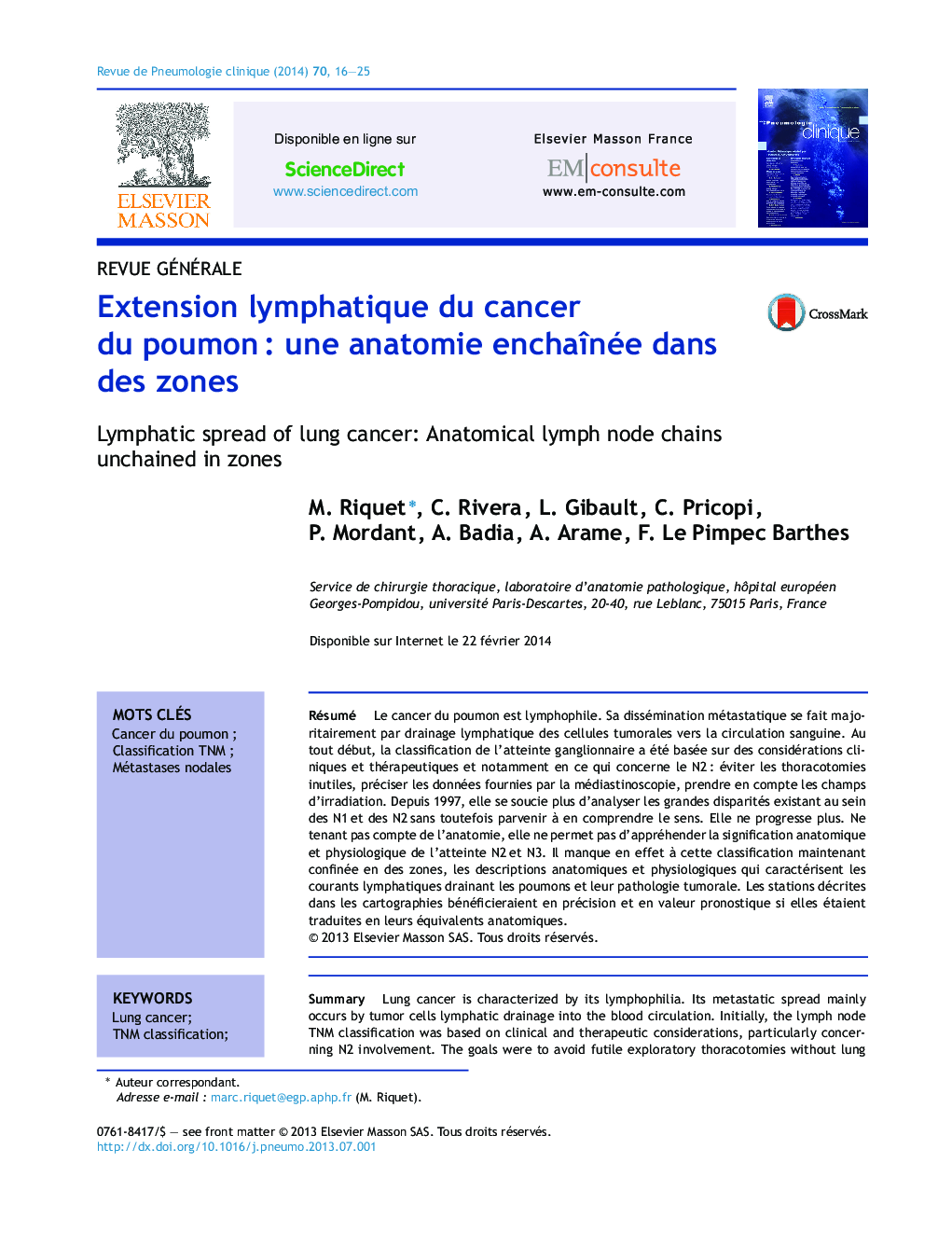| Article ID | Journal | Published Year | Pages | File Type |
|---|---|---|---|---|
| 3419556 | Revue de Pneumologie Clinique | 2014 | 10 Pages |
Abstract
Lung cancer is characterized by its lymphophilia. Its metastatic spread mainly occurs by tumor cells lymphatic drainage into the blood circulation. Initially, the lymph node TNM classification was based on clinical and therapeutic considerations, particularly concerning N2 involvement. The goals were to avoid futile exploratory thoracotomies without lung resection, to provide more accurate data from mediastinoscopy, and to take into account the radiation therapy fields. Since 1997, the international lymph node classification was more used to analyse the disparities within N1 and N2 groups. However, this attempt did not succeed in clarifying the lymphatic metastazing process, and was not progressing any more. Anatomy not being considered, it did not permit to grasp the anatomical and physiological significances of N2 and N3 involvement. In effect, this classification is now confined in zones and is lacking the anatomical and physiological descriptions that characterise the lymphatic pathways draining the lungs and their tumoral pathology. The stations proposed in numbers in cartographies should have gained in accuracy and in prognostic value if they had been expressed in their anatomical counterparts.
Related Topics
Health Sciences
Medicine and Dentistry
Infectious Diseases
Authors
M. Riquet, C. Rivera, L. Gibault, C. Pricopi, P. Mordant, A. Badia, A. Arame, F. Le Pimpec Barthes,
